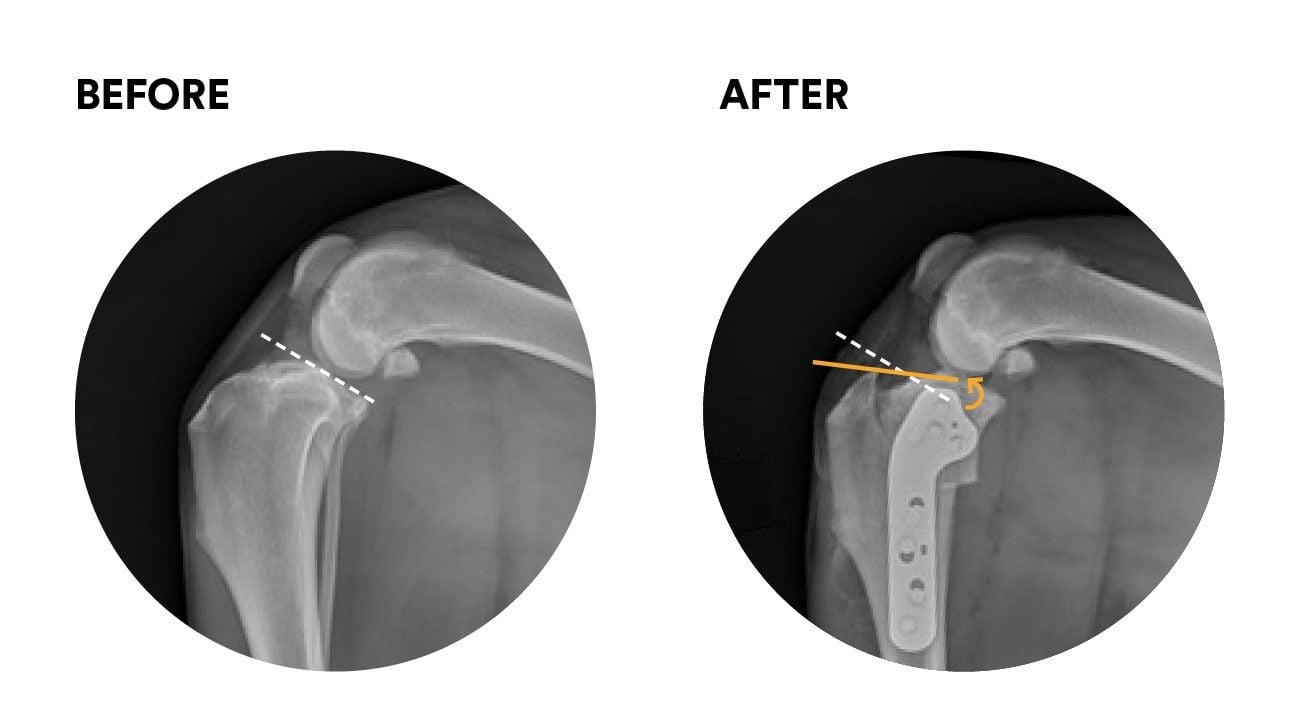Cruciate Disease and TPLO Surgery
)
Tibial plateau Levelling osteotomy or TPLO is a procedure for managing stifle instability due to failure of the anterior cruciate ligament, also know as the cranial cruciate ligament.
The cranial cruciate ligament (CCL) fails most commonly in the dog due to cruciate disease which is a degenerative condition which sees the CCL weaken over time and fail. The process of weakening and failure is painful and we see lameness, pain and reduced activity. This process has also been referred to as non traumatic cruciate rupture as it is not associated with trauma - the ligament fails during normal daily activity.
Cruciate disease is a very common issue in the dog and is the commonest orthopaedic procedure performed. Their are likely lifestyle factors and genetic factors contributing to the frequency of this condition.
Cruciate management surgery has often been referred to as cruciate repair surgery - however this is not correct. None of the procedures performed to manage cruciate disease actually “repairs” the cruciate. Instead, cruciate surgery manages the consequences of cruciate disease, mainly; stifle instability, pain, lameness and degenerative joint disease (DJD).
There are many ways cruciate management surgery may be performed. The two basic groups are:
- Those that replace the function of the cruciate and
- Those that change the way the joint works so we don’t need a cruciate .
TPLO surgery falls into the second category and is the originator of this concept. The joint is altered and no longer requires the cruciate to be stable during loading.
The TPLO procedure is only part of the surgical procedure. The overall procedure consists of;
- Anaesthesia and Analgesia - This is keeping the patient calm, still and pain free during the procedure. At ACE we subscribe to the Zero pain philosophy and use many different components together to keep patients comfortable and pain free. These include pain control via constant intravenous infusion, ultrasound guided blocks to the sciatic and femoral nerves and anti-anxiety medications to reduce response to the changed environment.
- Arthroscopy - To examine the inside of the joint. This is the use of very small cameras - usually under 3mm, to examine the inside of the joint through small incisions. This causes less pain and is more sensitive to finer issues as the picture is magnified. If problems such as a meniscal tear are found we can remove this via arthroscopy also.
- The TPLO procedure - The proximal tibia is approached through a small incision and the tibia is cut with a curved saw and the bones altered in position. Finally a plate is applied to hold the bones in position while they heal.
- Physical therapy - Before and after surgery the leg is placed into a compression ice pack. Additionally patients are given massage and physical movement to aid in rapid return to weight bearing during their hospital stay.
Benefits of TPLO
Patients that have undergone cruciate management surgery show:
- Rapid return to weight bearing
- Vastly improved function
- Reduced pain
- Reduced progression of degenerative joint disease
- Patients who have had TPLO surgery get lifelong management of the cruciate disease.
| Tags:Client InformationVeterinarian Information |
